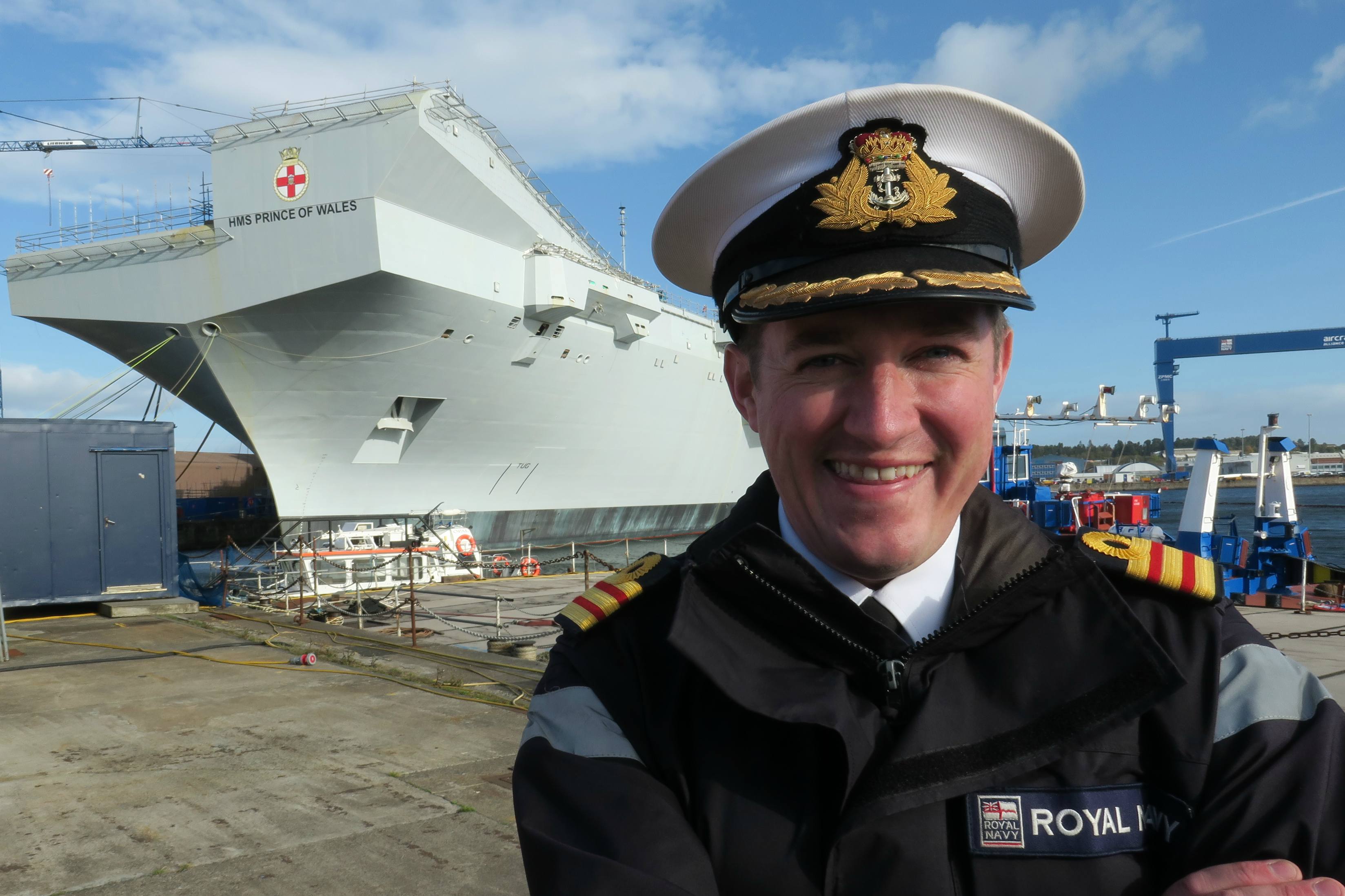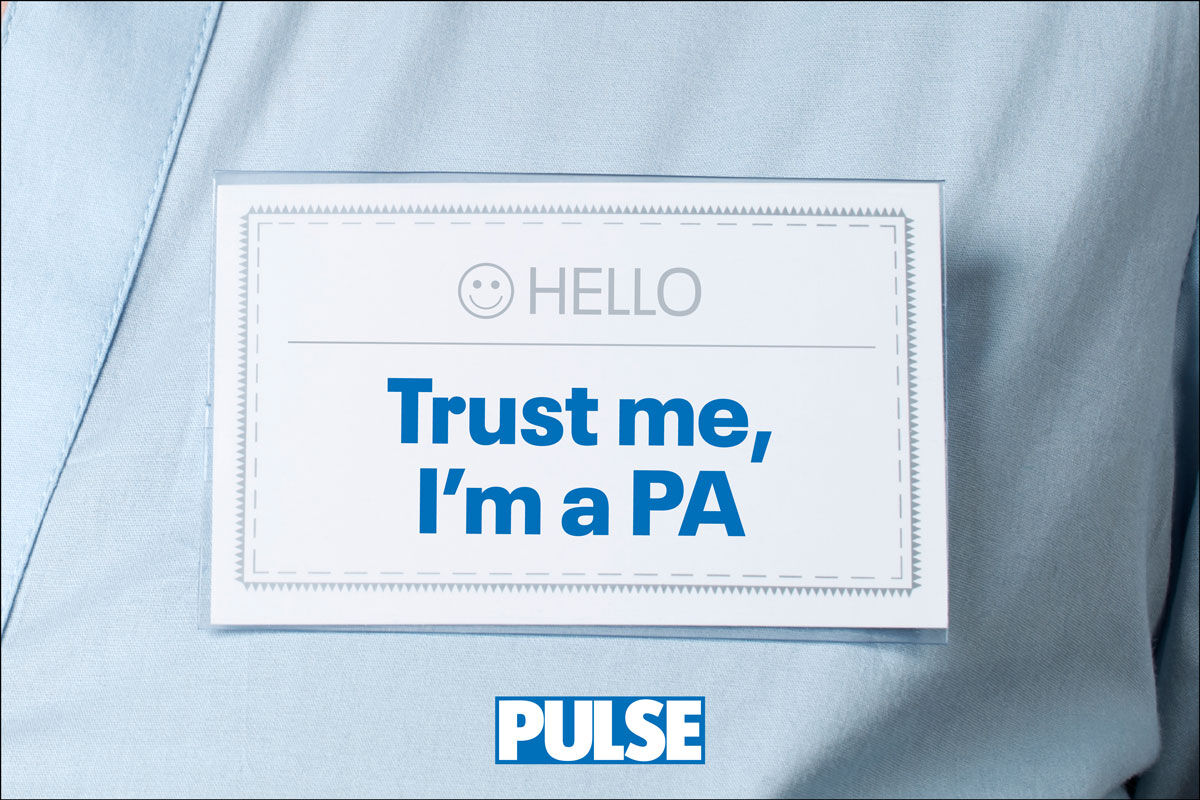Profile: Surgeon Commander Mike Russell RN

Photo: Anthony Colling
Roles: Royal Navy medical officer and GP trainer
Hours worked per week: Highly variable at sea, but generally one or two clinics per day. In the UK, six clinical sessions at a naval base plus one session in NHS placement
07.45 I head to the ship’s medical complex on ‘5 Deck’ to start my shift. My first patient is a chef with irritant contact dermatitis affecting both hands, probably related to long shifts exposed to heat and cooking fumes. At sea, skin problems are common, along with minor injuries.
I joined the Royal Navy in 2007 in my Foundation Year 2. After a militarisation phase, I spent six months preparing to be a seagoing medical officer, followed by time in submarines looking after a crew of 180. I then did my GP training in a mix of military and NHS settings.
I am now principal medical officer of the aircraft carrier HMS Prince of Wales, where I oversee a medical department of 12, including another GP, a practice nurse, a pharmacy technician, medical assistants and a dental team. This serves up to 1,500 personnel, including aircrew and those within the Royal Marines.
08.30 A male helicopter pilot in his mid-30s attends with ongoing neck pain, which is causing problems during flying duties. We agree he will probably require a period of grounding and stronger analgesia. Luckily we have a physiotherapist on board I can refer him to.
Occupational medicine is central to the job: nearly every decision requires me to assess a patient’s ability to perform their role. We have 15-minute consultations to allow occupational grading, and have to balance patient confidentiality with allowing commanders to do risk assessments.
10.00 Time for the morning ‘stand easy’ so I finish off some admin. For patient records, we use EMIS adapted for occupational grading. When at sea, it syncs every night by satellite with the UK record.
I then head to the wardroom (officers’ mess) to catch up with shipmates. The pilot patient I saw earlier is telling colleagues about his neck problem and there’s some lighthearted banter about his grounding: ‘Here comes doctor downgrade.’ I pour myself a cup of coffee.
12.00 I go to the ship’s mess for lunch and chat with colleagues; camaraderie is important at sea and I enjoy hearing what is going on outside the medical centre.
14.15 I receive an urgent call to a crew member who has fallen down a lift shaft. He is unconscious and requires airway support. I decide he needs immediate transfer to hospital. Our nearest city is Lisbon, 50 miles away; I talk to the captain and we prepare one of our helicopter crews to fly him, escorted by my GP colleague. Our port agent in Lisbon arranges a neurosurgical unit to receive him.
Although urgent cases are thankfully uncommon, I have to keep up to date with ‘battlefield’ advanced trauma life support and pre-hospital emergency care. Other emergencies I’ve dealt with include fractures, burns, progressive keratitis, acute coronary syndrome and appendicitis. We may also deal with non-crew emergencies on humanitarian missions; so far I have been deployed to Sierra Leone during the ebola epidemic and to the Caribbean in hurricane season.
The job also offers fantastic opportunities for sport and adventure training – I have been parachuting, skiing, mountaineering and mountain biking.
16.00 I finish my clinical work for the day. The sun is shining and the air department has opened the flight deck to visitors. I take the opportunity to go for a flight deck run, although I don’t feel quite up for circuit training with the Royal Marines today.
19.00 After dinner, I go to the bridge to chat to the navigator and watch the sunset, before phoning home. Then back in the mess I play Uckers, a board game that’s a naval tradition. Many colleagues use the evenings at sea to practise hobbies, such as learning the guitar or painting, or for postgraduate study.
• For information on medical careers in the Royal Navy see tinyurl.com/royalnavy-medical-officer and follow on Twitter @MedicsNavy @HMSPWLS

















